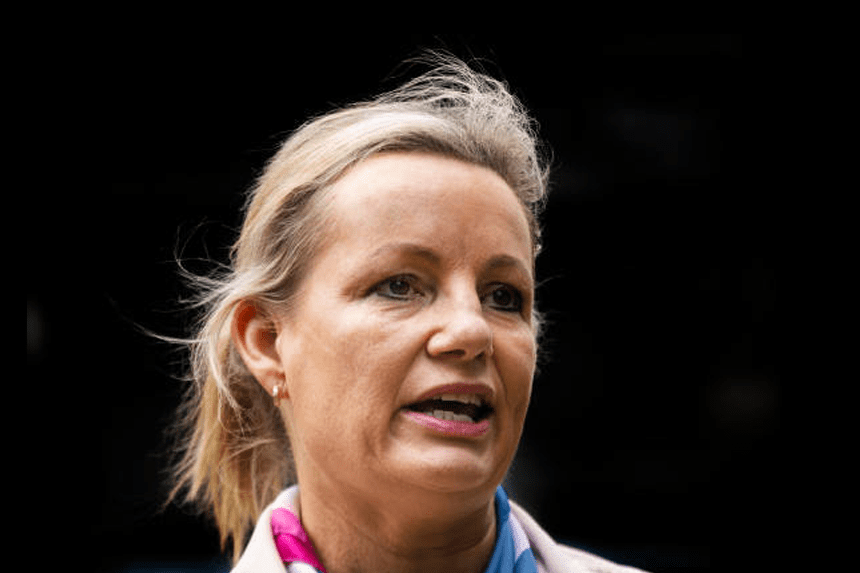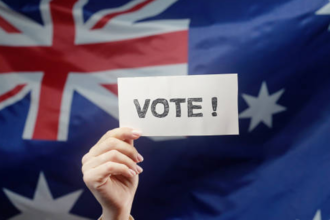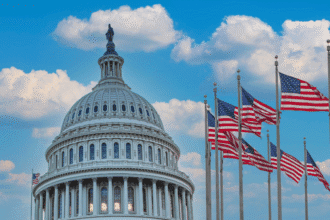With the selection of Sussan Ley y Liberal Party leader, Australia has created history—the first time a woman has been selected to head the Liberal Party. Following the most notable election loss of the party in decades, this presents a chance for change and revitalization. Under her direction, the party is positioned to restore its reputation, re-engage its supporters, and change its position on important problems. This paper will look at Susan Ley’s road to leadership, difficulties she encounters, and implications of her appointment for Australian politics going forward.
- Who is Sussan Ley, and how did she come to be the leader of the Liberal Party?
- What went wrong in the Liberal Party's defeat?
- Vision of Sussan Ley's leadership: Creating a modern liberal party
- Global Human Rights Advocacy and the Palestine Issue
- The Road Ahead: For the Liberal Party, what promises?
- In general, The Future of the Liberal Party Under Sussan Ley
Who is Sussan Ley, and how did she come to be the leader of the Liberal Party?
Over two decades of Australian politics have seen Sussan Ley be a major player. She has represented Farrer, a rural New South Wales electorate spanning more than any European nation, since 2001. Ley has served in several key governmental capacities over her career, including Minister of Health and Minister of the Environment under past administrations.
Her ascent to head of the Liberal Party occurs at a pivotal point in Australian politics. After the Liberal-National alliance lost the May 3 federal election significantly, the party was at a crossroads. Many Liberals realized they needed a new, vibrant leadership to lead the party through its recovery after Prime Minister Anthony Albanese’s Labor Party won handily.
Ley’s moderate, pragmatic approach, which contrasted with the more austere, conservative leadership challenges presented by opponents like Angus Taylor, was the basis for her election as Sussan Ley Liberal Party leader. Ley’s history and approach to leadership show a mix of knowledge of rural and metropolitan Australia, integrity, and experience.
What went wrong in the Liberal Party's defeat?
One of the worst losses the Liberal Party had ever had came from the 3 May vote. Previously ruling for almost ten years, the Coalition suffered a significant blow, losing several important seats and reducing its Parliamentary presence. With at least 93 seats, a 16-seat gain, the Labor Party’s landslide victory demonstrated how Australia’s political scene had changed.
Several elements helped to explain the loss. Many experts cite the party’s divided and divisive leadership as well as a campaign that neglected to involve the voters, especially younger and female ones. The party’s policy orientation alienated many of the people it had typically relied on, and its message felt antiquated.
Most famously, the Liberal Party’s hard-right policies on immigration, climate change, and energy seemed out of touch with the general Australian population. Many younger Australians, who have grown more concerned about climate change, thought the party’s stance on fossil fuels and environmental preservation especially alarming. Moreover mentioned as main causes of the party’s electoral loss were its incapacity to solve gender equality and its neglect of women voters.
Ley’s challenge as leader of the Sussan Ley Liberal Party will be to turn around this fall-off The party might need her moderate attitude and dedication to changing its policies and image if it is to get back on track. Read another article on Jes Staley’s Reputation Battle
Vision of Sussan Ley's leadership: Creating a modern liberal party
She has already mentioned several important issues following her election as Sussan Ley, Liberal Party leader. Making sure the party embodies Australia’s modern ideals and diversity will be one of the most crucial components of her leadership.
“We need to have a Liberal Party that respects modern Australia, that reflects modern Australia, and that represents modern Australia,” she said during her acceptance speech. She underlined that the party has to interact with people on the topics that most affect them, meet them where they are, and be a party that serves everyone rather than only a few.
Ley’s leadership style stands quite apart from the more top-down, authoritarian approach that has defined most of the party in recent years. Ley promised her colleagues that under her direction, there wouldn’t be any “captain’s calls.” Rather, she underlined that policy decisions would be decided by cooperation and consultation, therefore guaranteeing that every opinion is heard and given weight.
This action marks a change from the conventional wisdom, which some claim alienated certain voter groups—especially women—by means of commercial practices. Ley is dedicated to see the Liberal Party more inclusive, varied, and progressive under her direction.
Global Human Rights Advocacy and the Palestine Issue
Apart from her background in domestic politics, Sussan Ley has shown a readiness to adopt strong positions on worldwide human rights concerns. As a previous co-chair of the Parliamentary Friends of Palestine, Ley has been an outspoken advocate for Palestinian autonomy and the acceptance of Palestinian independence. Her previous stance on this matter has generated both compliments and criticism.
In Parliament, she has spoken out in favor of Palestinian rights, calling attention to the suffering of the Palestinian people and advocating for peaceful solutions to the Israeli-Palestinian conflict. This has made her a respected figure among human rights advocates, particularly within multicultural communities in Australia.
Ley’s promotion of justice and human rights remains a major legacy, even if some of her party members have attacked her position on Palestine, because MP Andrew Wallace notes that Ley “has seen the light on Israel” in recent years. Particularly in an area as unstable as the Middle East, many will be closely observing to see how her leadership will negotiate the complexity of foreign policy and international relations.
The Road Ahead: For the Liberal Party, what promises?
As Susan Ley, Liberal Party leader, her first objective will be to unite the party and regain its credibility. The opposition has an uphill fight to rebuild trust since the Labour Party enjoys great public support. Ley’s first order of business will likely be to initiate a review of all existing policies — from climate change to nuclear energy — and reform them to better align with the concerns of the electorate.
Her leadership is desperately needed. Australians are searching for political leaders that not only reflect their ideals but also provide workable answers for urgent problems such social justice, healthcare, and climate change. Ley’s success will depend on her ability to strike a mix between the demands of a fast changing culture and classic Liberal principles.
She has already shown a dedication to tackling climate change and changing the party’s position on environmental problems, but she also has to make sure her leadership is inclusive and sensitive to the several needs of Australians. Particularly rebuilding rapport with women and young people will be vital.
In general, The Future of the Liberal Party Under Sussan Ley
In conclusion, Sussan Ley Liberal Party leader signifies a significant shift in Australian politics. Her appointment as the first female head of the Liberal Party comes at a time when the party sorely needs rebirth and change. Experience, pragmatism, and dedication to reforming the party will help her to be the leader bringing the Liberals back from the edge.
Although the obstacles ahead are great, Susann Ley has demonstrated over her career that she is not hesitant to tackle tough problems and make bold judgments. Under her direction, the Liberal Party marks a new chapter that promises a notable transformation of Australian politics.
Her success will rely on her capacity to inspire the party, restore voter confidence, and present a new vision for an inclusive and progressive Australia. She has a special chance as Sussan Ley Liberal Party leader to influence Australian politics going forward for many years.








